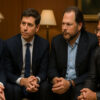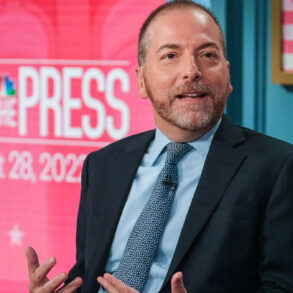A Step Toward a Framework Toward a Negotiation for Peace
A potential breakthrough in the Russia-Ukraine conflict has emerged as Russian President Vladimir Putin expressed tentative support for a U.S.-brokered 30-day ceasefire. While Putin acknowledged the ceasefire as a “correct” proposal, he emphasized that many details still needed to be addressed before Moscow could agree to halt its invasion. Meanwhile, Ukrainian President Volodymyr Zelensky has signaled his readiness to move forward with the deal, though both sides remain deeply skeptical of each other’s true intentions. The ceasefire, if agreed upon, could be a critical step toward ending the war, but only if it leads to a more permanent resolution.
The Proposal and Its Mediators
The ceasefire proposal, backed by the United States and accepted in principle by Ukraine, aims to pause hostilities along the entire front line for 30 days. American special envoy Steve Witkoff arrived in Moscow to brief Russian officials on the peace plan, following discussions in Saudi Arabia where Ukrainian officials had agreed to the framework. The diplomatic effort has also involved global powers such as China, India, Brazil, and South Africa, whom Putin thanked for their “noble mission to end the fighting to casualties.”
U.S. President Donald Trump, who has made ending the war a major foreign policy objective, has pushed for a rapid resolution, warning of potential economic consequences for Russia if negotiations stall. Trump has also floated the idea of meeting directly with Putin to finalize the terms, stating that “every day, people are being killed,” and that the situation must be resolved quickly. He has hinted at the possibility of unleashing new sanctions against Russia if Moscow refuses to cooperate, saying, “I can do things financially that would be very bad for Russia. I don’t want to do that because I want to get peace. In a financial sense, yes, we could do things that would be very bad for Russia, that would be devastating for Russia.”
Putin’s Conditions and Demands
While Putin has not outright rejected the ceasefire, he has raised several key concerns that could complicate the agreement. He stated, “We agree with the proposals to halt the fighting, but we proceed from the assumption that the ceasefire should lead to lasting peace and remove the root causes of the crisis.” He further elaborated that any agreement must ensure that Ukraine does not use the ceasefire period to strengthen its military position, saying, “Another issue is whether Ukraine could use the 30-day ceasefire to continue mobilization and rearmament.”
In addition, Putin has reiterated Russia’s long-standing demand that Ukraine never be allowed to join NATO and that foreign troops must never be stationed on Ukrainian soil. These demands have been consistent since Russia’s full-scale invasion of Ukraine in 2022, though they were previously dismissed as non-starters by the West. He has also suggested that energy cooperation with the U.S. and the return of Western businesses to Russia could be part of a broader negotiation, stating that “if Moscow and Washington could agree on energy cooperation, then gas supplies for Europe could resume.”
Ukraine’s Perspective and Strategic Considerations
From Kyiv’s perspective, agreeing to a ceasefire now is a tactical decision. Ukrainian forces have been under significant pressure in Russia’s Kursk region, where Russian troops claim to have driven them out of a key operational hub, Sudzha. However, Ukrainian military officials have suggested that their troops are “maneuvering to more advantageous lines,” rather than being decisively pushed back.
Zelensky has accused Moscow of dragging out the negotiation process while intensifying its attacks, arguing that Putin is using diplomatic talks to buy time for his military operations. He wrote on Telegram, “Putin, of course, is afraid to tell President Trump directly that he wants to continue this war, that he wants to kill Ukrainians.” His remarks reflect Ukraine’s fear that Russia will use the ceasefire to consolidate gains, rather than genuinely seek peace.
Russian Skepticism and Hardline Stance
Despite Putin’s openness to discussions, many within his inner circle remain skeptical of the U.S. proposal. Kremlin aide Yuri Ushakov was among the most vocal critics, stating that the ceasefire would “give us nothing,” and would merely provide Ukraine time to regroup and rearm. “It only gives the Ukrainians an opportunity to regroup, gain strength, and to continue the same thing,” he warned.
Russian Foreign Ministry spokesperson Maria Zakharova took an even harder stance, insisting that “any” foreign military presence in Ukraine is unacceptable to Moscow. “For us, it is absolutely unacceptable to deploy units of the armed forces of other states in Ukraine under any flag, whether it be a foreign contingent, military bases, or some peacekeeping operations,” she said, adding that Russia would respond “with all available means” if this condition was violated.
Meanwhile, Moscow has been emboldened by recent battlefield gains. Putin’s visit to his commanders in Kursk was seen as a signal that Russia intends to press its advantage before agreeing to any pause in fighting. During his meeting with military officials, Putin declared, “It’s necessary to think about creating a security zone alongside the state border,” hinting that Russia may seek to expand its territorial gains into Ukraine’s neighboring Sumy region.
The Role of the U.S. and Potential Consequences
The United States has played a crucial role in brokering the ceasefire, but its leverage is limited. While Trump has threatened severe economic sanctions if Russia refuses to cooperate, his administration has also paused additional military aid to Ukraine while awaiting the outcome of negotiations. This decision has sparked debate in Washington, where some officials worry that withholding support could weaken Ukraine’s bargaining position.
The U.S. has also begun discussions with Ukraine about potential territorial concessions as part of a final settlement, though no details have been made public. Secretary of State Marco Rubio has suggested that “there’s different ways to construct a deterrent on the ground,” raising questions about whether Western peacekeepers might play a role in enforcing any agreement—a scenario Moscow has vehemently rejected.
With both sides hesitant but engaged, the coming days will be crucial in determining whether the ceasefire materializes. Putin has indicated that further discussions with Washington are needed, while Trump remains eager to strike a deal. Meanwhile, on the battlefield, each side continues to maneuver, aware that any pause in fighting could shift the balance of power.
If successful, the ceasefire could provide a pathway to broader peace negotiations. However, if it collapses, it may instead serve as another flashpoint in an increasingly volatile conflict.
NP Editor: Trump said he could do it, and he will. But Russia will not be giving back very much of the territory he took, he will not be paying reparations, and Ukraine will not be invited to join NATO. The time to prevent any of this was before Russia invaded, and Biden was not up to to the tasks. But the bloodshed will stop. And perhaps the U.S. will have some shiny new mineral mines in exchange for ensuring security there.








